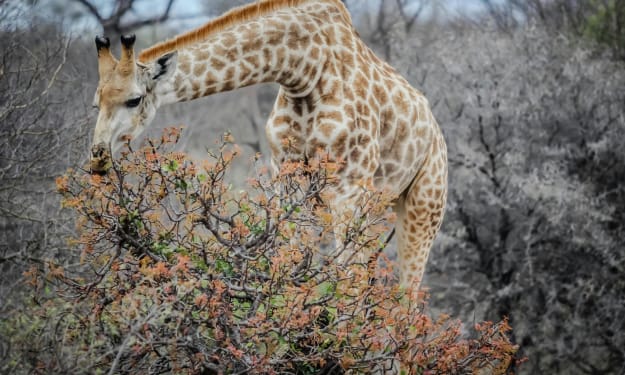Astrophotography Unveiled
Capturing the Enchanting Beauty of the Night Sky

Introduction
The night sky has always fascinated humans, inspiring us to explore and understand the vastness of the universe. One way to document and appreciate its beauty is through astrophotography, the art of capturing celestial objects and phenomena using cameras and telescopes. Astrophotography allows us to witness and immortalize the wonders of the night sky, from breathtaking starry landscapes to distant galaxies and nebulae. In this article, we will embark on a journey into the world of astrophotography, exploring the techniques, equipment, and challenges involved in capturing the mesmerizing beauty of the cosmos.
Equipment and Techniques
Astrophotography requires specialized equipment to capture the faint light emitted by celestial objects. While basic astrophotography can be done with a DSLR camera and a tripod, serious enthusiasts often invest in more advanced gear. Let's take a look at some essential equipment and techniques used in astrophotography.
- Camera: A camera with manual settings, a large sensor, and good low-light performance is crucial for capturing the night sky. Full-frame DSLRs or mirrorless cameras are popular choices due to their ability to gather more light. However, even entry-level DSLRs can produce stunning astrophotographs with the right techniques.
- Lens: A wide-angle lens with a low f-number (aperture) is ideal for capturing expansive views of the night sky. Lenses with focal lengths between 14mm and 35mm are commonly used to capture starry landscapes and Milky Way panoramas. Additionally, telephoto lenses are essential for capturing detailed images of the moon, planets, and deep-sky objects.
- Tripod: A sturdy tripod is necessary to keep the camera stable during long-exposure shots. Stability is crucial to prevent motion blur caused by camera shake, especially when using longer focal lengths.
- Tracking Mount: To capture detailed images of distant galaxies and nebulae, astrophotographers often use motorized tracking mounts. These mounts compensate for the Earth's rotation, allowing the camera to track the stars and capture longer exposures without blurring.
- Remote Shutter Release: A remote shutter release or an intervalometer helps to minimize vibrations when taking long-exposure shots. This is particularly useful for capturing star trails and time-lapse sequences.
- Light Pollution Filters: Light pollution filters can be attached to the lens to reduce the impact of artificial light sources, enhancing the visibility of celestial objects. These filters are especially useful when shooting in urban or suburban areas with high light pollution levels.
- Image Stacking and Processing: Astrophotographers often employ image stacking techniques to reduce noise and enhance details in their photographs. Multiple images of the same subject are aligned and combined to create a single, noise-free image. Post-processing software, such as Adobe Photoshop or specialized astrophotography programs like DeepSkyStacker, are used to process and enhance the final images.
Challenges in Astrophotography
While astrophotography offers a captivating glimpse into the cosmos, it is not without its challenges. Here are some of the common hurdles faced by astrophotographers:
- Light Pollution: The increasing presence of artificial lights in urban areas has led to significant light pollution, making it challenging to capture clear and detailed images of the night sky. To overcome this, astrophotographers often travel to remote locations with minimal light pollution or use light pollution filters.
- Weather Conditions: Clear skies are essential for astrophotography. However, weather conditions can be unpredictable, and clouds or atmospheric turbulence can hinder photography sessions. Patience and persistence are key attributes for astrophotographers, as they often have to wait for extended periods to capture the perfect shot.
- Technical Expertise: Astrophotography requires a solid understanding of camera settings, exposure techniques, and post-processing. Learning and mastering these technical aspects can be time-consuming, but the rewards are worth the effort.
- Equipment Limitations: Advanced equipment such as tracking mounts and telescopes can be expensive. Limited budgets may restrict some enthusiasts from accessing specialized gear, but it's important to remember that impressive astrophotography can still be achieved with entry-level equipment.
- Time and Dedication: Capturing stunning astrophotographs often requires long hours spent outdoors during the night, sometimes in uncomfortable conditions. The dedication and passion to explore the night sky and overcome challenges are what separate exceptional astrophotographers from the rest.
Inspiring Subjects in Astrophotography
Astrophotography offers a wide range of subjects to capture, each with its own unique beauty. Let's explore some of the most inspiring subjects in astrophotography:
- Milky Way: The Milky Way galaxy, our home in the universe, is a popular subject for astrophotographers. Photographing the Milky Way requires finding a location with minimal light pollution and shooting during the right season and time of the night. The resulting images reveal the grandeur of our galaxy, with its spiral arms and countless stars.
- Star Trails: By using long-exposure techniques, astrophotographers can capture mesmerizing star trail images. As the Earth rotates, the stars appear to move in circular or arched patterns across the sky. These images create a sense of motion and showcase the Earth's rotation in relation to the celestial sphere.
- Deep-Sky Objects: Deep-sky objects are celestial targets that lie outside our solar system. They include galaxies, nebulae, and star clusters. Capturing detailed images of these objects often requires specialized equipment, such as telescopes and tracking mounts. The resulting astrophotographs reveal the stunning structures and colors of distant galaxies and nebulae, offering a glimpse into the vastness of the universe.
- Planets and Moon: Astrophotography also allows us to capture our neighboring planets and the Moon in remarkable detail. With the right equipment, photographers can capture the craters, mountains, and even the subtle colors on the lunar surface. Planetary astrophotography requires precise timing and often involves shooting multiple frames and stacking them to enhance details.
Conclusion
Astrophotography provides a window into the wonders of the night sky, enabling us to capture and appreciate the beauty of celestial objects and phenomena. With the right equipment, techniques, and a passion for exploration, astrophotographers can create stunning images that showcase the magnificence of the cosmos. While it may present challenges, the rewards are immeasurable, as astrophotography allows us to witness and share the splendor of the universe with others. So, grab your camera, venture into the night, and embark on a journey of discovery and creativity in the world of astrophotography. The wonders of the night sky await your capture
About the Creator
Melodic Narrator
Introducing the voice that will enthrall your senses and redefine your perception of storytelling. Meet melodic narrator, the captivating maestro of Vocal.Media. Embark on a journey of enlightenment with melodic narrator.
Enjoyed the story? Support the Creator.
Subscribe for free to receive all their stories in your feed. You could also pledge your support or give them a one-off tip, letting them know you appreciate their work.






Comments
There are no comments for this story
Be the first to respond and start the conversation.